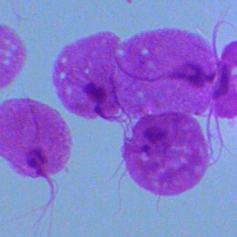
Histrionic Personality Disorder Can Cause an Overwhelming Need for Attention
Unlike those with narcissistic personality disorder, individuals with HPD can show empathy and betray more vulnerability.

Why does Michael Scott from The Office use his colleagues and subordinates as a stand-in family, when they don’t reciprocate his enthusiasm? Why does Mean Girls‘s Regina George, a conventionally attractive teenager, keep finding fault with her appearance? Why do both characters enjoy attention so much, pulling one outrageous stunt after another in order to keep the public eye on themselves? Chances are, rather than just being cartoon-character villains, both Scott and George may be afflicted with Histrionic Personality Disorder.
What is histrionic personality disorder?
Histrionic personality disorder, as defined by the Diagnostic and Statistical Manual of Mental Disorders, is a psychiatric disorder distinguished by a pattern of “extreme emotionality and attention-seeking behavior that begins by early adulthood and is obvious in different situations.” It is classified as a Cluster B personality disorder, which is a group of conditions characterized by volatile thinking or behavior.
While histrionic personality disorder is often confused with narcissistic personality disorder, the two have differences. Histrionic personality disorder is rarer, and those afflicted by it are more likely to show empathy than those afflicted by narcissistic personality disorder. People with histrionic personality disorder are also less likely to demand a specific type of attention, while those with narcissistic personality disorder prefer attention that makes them feel superior. People with histrionic personality disorder are also more emotionally charged than those with narcissistic personality disorder.
Related on The Swaddle:
All You Need to Know About Dissociative Identity Disorder
What are the symptoms of histrionic personality disorder?
According to the Diagnostic and Statistical Manual-V, diagnosing histrionic personality disorder requires observing a pattern of attention-seeking behaviors and emotionally volatile behaviors, which manifest in the following criteria, stated within an NCBI resource by Jennifer H. French and Sangam Shrestha.
- Exhibiting discomfortwhen not the center of attention
- Displaying excessive seductive or provocative behavior
- Showing shifting and shallow emotions
- Using appearance to draw attention
- Having impressionistic and vague speech
- Having dramatic or exaggerated emotions
- Being suggestible, easily believing things
- Considering relationships more intimate than they are
Meeting five or more of the above criteria will lead to a diagnosis of histrionic personality disorder. As personality continues to evolve over time, most diagnoses of histrionic personality disorder happen after the age of 18. Other signs of the disorder, according to the Cleveland Clinic, include:
- Constantly seeking reassurance or approval
- Making rash decisions
- Displaying self-centered behavior and lack of concern for others.
- Showing low tolerance for frustration, being easily bored by routine, often starting projects without finishing them or skipping from one event to another
What are the causes of histrionic personality disorder?
Scientists are torn between whether individuals are genetically susceptible to histrionic personality disorder, or if children are merely repeating learned behaviors from their parents. Other factorsmay be environmental — unpredictable positive reinforcement from parents, lack of criticism while growing up, all leading to confusion regarding what behaviors earn approval. Individuals may also develop histrionic personality disorders as a maladaptive coping mechanism due to childhood trauma.
Women are four times more likely to be diagnosed with histrionic personality disorder — but this statistic doesn’t necessarily mean women are more prone to the disorder. Symptoms of histrionic personality disorder include behaviors stereotyped as feminine — for example, excessive sexually provocative behavior in women is a symptom of HPD and a stigmatized behavior in general, but societal bias holds any kind of sexually provocative behavior in women to be inappropriate. This means mental healthcare providers may mistake any display of female sexuality as “excess” and symptomatic.
On the other hand, for men, accepting that they may be coping with behaviors stereotyped as traditionally feminine could lead to stigma, which may make men less likely to report their symptoms, skewing the statistics to make it seem as though histrionic personality disorder is a condition more common to women.
Can histrionic personality disorder be treated?
Psychotherapy is the preferred method of treating this personality disorder — specifically supportive psychotherapy, which has an encouraging and non-threatening approach. The biggest struggle, however, is to get those afflicted by the disorder to admit they have a problem, as their behaviors read as normal to themselves. Mental healthcare providers may also attempt dynamic forms of therapy in which therapists integrate developmental milestones that patients may have missed out on during their crucial growing years. Group therapy is not recommended, as individuals with histrionic personality disorder often desire the center of attention, and a group might disturb their ability to absorb the treatment.
There is no specific medication to treat histrionic personality disorder, but psychiatrists may prescribe antidepressants, mood stabilizers, and anti-psychotics to help symptoms. While there is no cure for histrionic personality disorder, the symptoms are manageable with therapy, enabling people with the disorder to lead functional, productive lives.
Aditi Murti is a culture writer at The Swaddle. Previously, she worked as a freelance journalist focused on gender and cities. Find her on social media @aditimurti.
Related


How Sitting in Traffic Jeopardizes Mental Health
